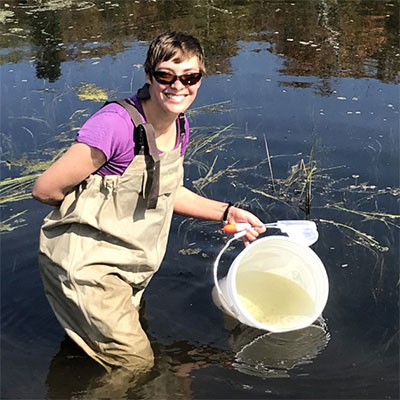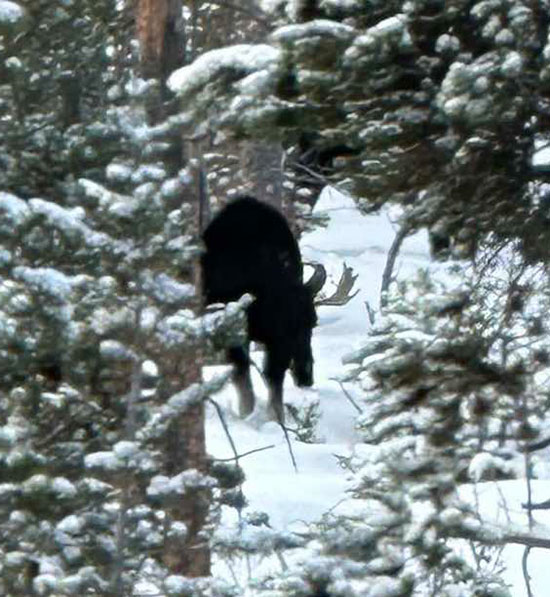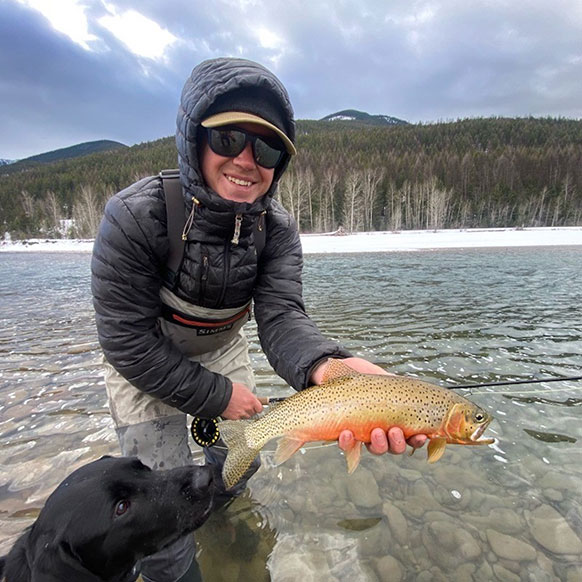Anniversary Highlight: Elizabeth Mandeville

I received a Biodiversity Institute Research Grant in 2015, to aid in my dissertation research on Colorado River basin suckers (fish) in Wyoming and Colorado. My BI-funded research focused on identifying ecological roles of hybrid fish - i.e., fish produced when two species interbreed. The ecological success of hybrids is likely to affect how large a role hybridization can play in an environment, and how far hybridization can proceed in a population. A really interesting thing about these fish is that their mouths are different shapes, corresponding to whether they eat more aquatic invertebrates or more algae. We used stable isotopes to show that the ecological roles of hybrids are different in different rivers, suggesting a lot of context dependence and implying that hybrids might be more successful in some rivers than others. We’re still working on publishing this study, but I am hopeful that it will be out soon.
After defending my PhD dissertation and graduating in 2016, I completed a 2.5 year postdoctoral research position, also at University of Wyoming, working primarily on trout hybridization and cichlid fish genomics. I moved to the University of Guelph (Ontario, Canada) to start my own lab as an assistant professor in 2019. Despite the chaos of starting up a new research group mostly in a pandemic, my lab is starting to do some really fun and interesting things. We’re currently working on projects that fall into two distinct themes: 1) effects of anthropogenic disturbance on fish evolution and ecology, and 2) evolutionary roles of sex chromosomes in fish diversification and hybridization. Our anthropogenic disturbance work is using genetic data from fish to better understand how agricultural land use, urbanization, and industrialization affect fish biodiversity. Our new work on sex chromosomes explores the fascinating diversity of sex determination systems (not just simple XY) that exist across fish species. The parts of the genome that cause individuals to become male or female are believed to play a major role in the evolution of new species, and differing sex determination systems might impede hybridization when they differ in closely related species. Along with two of my graduate students, I just published our first paper on this topic, in Journal of Evolutionary Biology. We’re pursuing related questions in the Colorado River basin suckers that I studied in Wyoming as a graduate student, and also in a fascinating hybrid lineage of Chrosomus dace. These dace are believed to be derived from a hybridization event about 50,000 years ago, and the wild thing is that they are all female and reproduce without incorporating any genetic contribution from males, so they are basically clonal. We’re doing fieldwork this summer to try to capture more of these fish (and others) so we can use their genetic material to better understand how they have evolved.
Share This Post

Social Media
Latest News



Archives
- All
- December 2025
- October 2025
- August 2025
- July 2025
- June 2025
- May 2025
- April 2025
- March 2025
- February 2025
- January 2025
- November 2024
- October 2024
- September 2024
- August 2024
- July 2024
- June 2024
- May 2024
- April 2024
- March 2024
- February 2024
- January 2024
- December 2023
- November 2023
- August 2023
- July 2023
- April 2023
- September 2022
- August 2022
- July 2022
- June 2022
- May 2022
- April 2022
- March 2022
- February 2022
- January 2022
- December 2021
- November 2021
- October 2021
- September 2021
- August 2021
- May 2021
- April 2021
- March 2021
- October 2020
- August 2020
- July 2020
- January 2020
- March 2019

